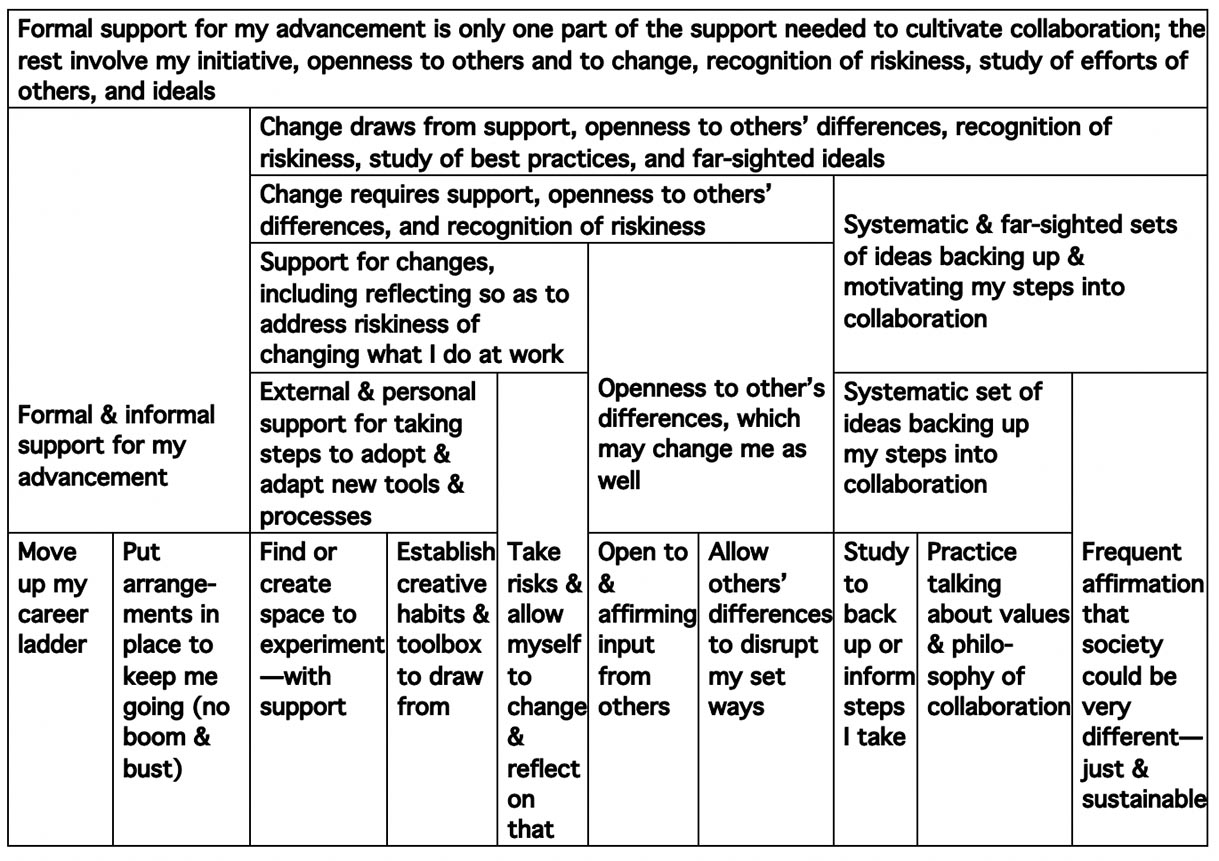Future Ideal Retrospective
Consider the thought experiment: “It is two years in the FUTURE: 'I am very pleased how skilled and effective I have become in contributing to collaborations as well as in leading others to develop their interest and skills in collaboration' (the IDEAL situation)' What has happened to make this come about? (the RETROSPECTIVE view).” This thought experiment can be used in generating a practical vision for future developments through Strategic Personal Planning or variants, such as the one below, that process evaluations or statements, questions, and/or reservations concerning a certain challenge, such as learning from what has happened before (e.g., in a course, at a conference, etc.).Preparation
0. Goals1. Organizer a. assembles written evaluations from, say, a conference, or b. asks a defined group (e.g., students in a course) to compose five statements, questions, and/or reservations that are important to them concerning a defined challenge (e.g., supporting each other to complete the course project by the end of the semester).
Session proper
(which may only include a subset of the people who composed the evaluations or statements, questions, etc.)2. The evaluations or statements/questions/reservations (from #1) are circulated. Digest them one by one and make notes on what you read with a view to representing not only your own views but also those of others (who may or may not be present at the session).
3. Future Ideal Retrospective: Imagine yourself some time in the FUTURE looking back with a sense of accomplishment on how far the group (e.g., conference organizing group, the students in the course) have come in response to the challenge (e.g., the issues raised the evaluation) = the IDEAL. Construe accomplishment broadly so it can include your own reflection and growth. RETROSPECTIVE: What happened to make this so?–What different kinds of things do you envisage having gone into or contributed to the positive developments? These things can span the mundane and inspiring; tangible and intangible; process, as well as product; relationships as well as individual skills. Record these things on Post-its (3-5 WORDS IN BLOCK LETTERS)
3a. Discuss in pairs each other's Post-its while waiting for others to finish.
4. Organizer photocopies assembled Post-its (making a copy for each participant).
5. Group, name, and synthesize (done separately by each participant):
After the session
6. Complete stage 5 and distribute your synthesis to others (see example below and in item 5g of the Creativity-in-Context think-piece; original Post-its are not shown)
Ten named clusters, progressively grouped and named into higher clusters